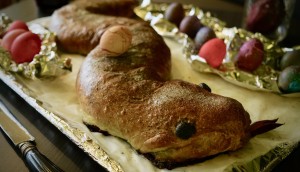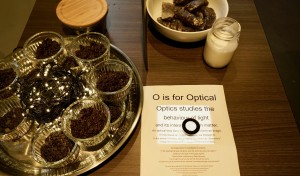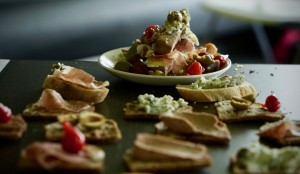ABeCedarium Feast
The winter 2019 interdisciplinary doctoral seminar HUMA889 culminated in a sensorially rich exhibition/feast collaboratively designed and curated by the class members and professor with the goal of manifesting deep understanding and mastery of complex theoretical constructs by translating them across media and register to another form altogether. As such, the class decided to transform concepts from the course readings into recipes and food that exemplified and didactically demonstrated the concept addressed.
Using the alphabet as playful and communicative way to communicate ideas that in and of itself is an algorithmic flexible form with innumerable combinations, each student and the professor were assigned 2 letters, and they were to choose a concept beginning with that letter and design a set of instructions (recipe) and create at least one of these inventions. From C for Colonialism, to X for X-rossing, and B for Becoming to T for transversal a wildly decadent exhibition of concepts for consumption were created.
Click here to see the recipes
The work was graded on clarity, originality, pertinence, presentation: Does it do something new in terms of insight? Is it clear what is being communicated? Is it relevant? Is it enjoyable / does it hold interest? Is it presented well (tasty, aesthetically pleasing—or if the taste or aesthetics are not necessarily pleasant, is this done in a purposeful way. Deliberate rationale for choices that is clearly communicated.)
In the lead up to the feast, students created a mood board to share ideas, citations and thoughts on how food could provide an interdisciplinary space to experiment with ideas materially. A rich exchange and thoughtful sharing took place where students connected to Guattari’s work in the La Borde clinic where: “we always ensured that the kitchen space was wide open to all patients and staff. Fantasms played in the “scene” of the kitchen and their expression often turned out to be very important for the possibility of recovery or improvements.’ This passage may be profitably read alongside Guattari’s consideration of the kitchen at La Borde as ‘a little opera scene’ (Ch. 6 & 9) replete with acting, dancing, playing with props and materials, a heterogeneous Territory, a ‘drive machine’ irreducible to orality, crossed by diverse materials and fluxes, whose aforementioned openness to other partial enunciators of subjectification in the institution (menu planning, pastry workshops), revealed its ‘coefficient of transversality’ (provided by Cadu).


